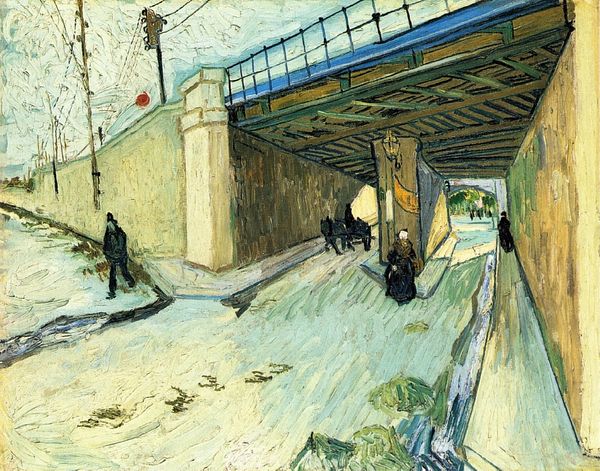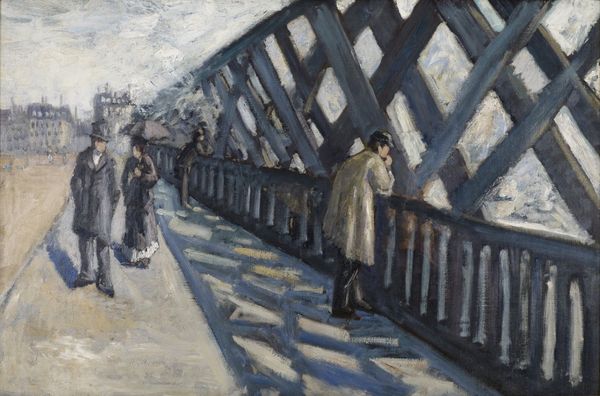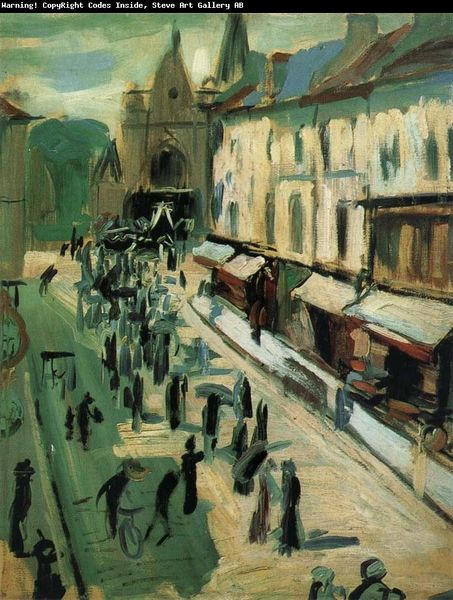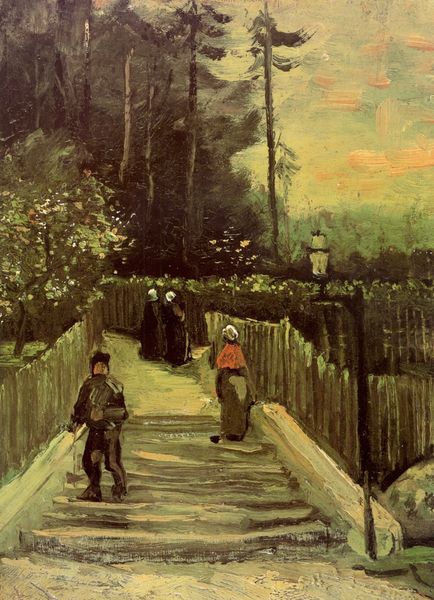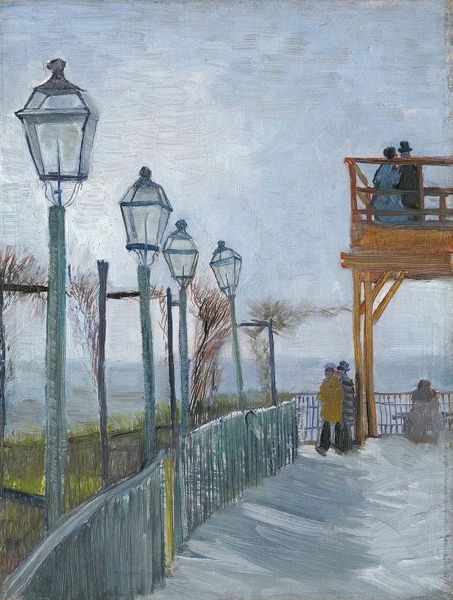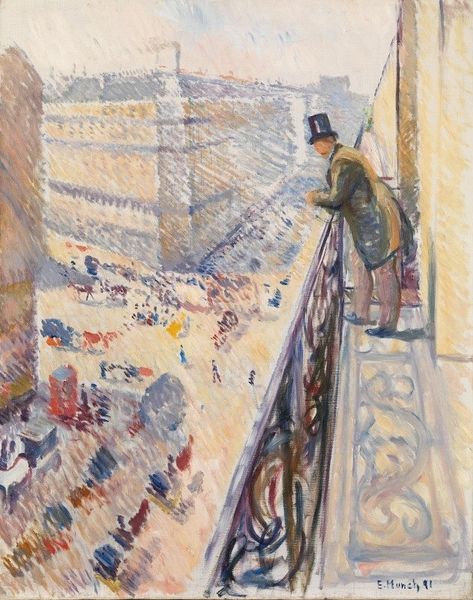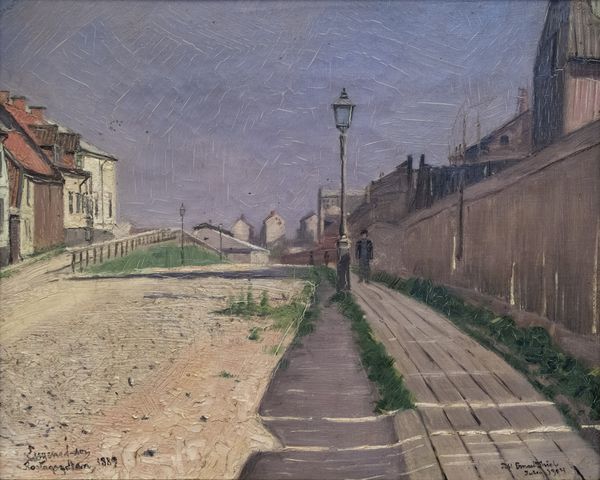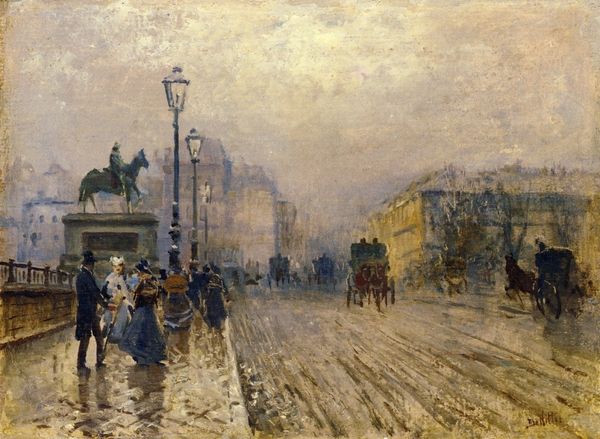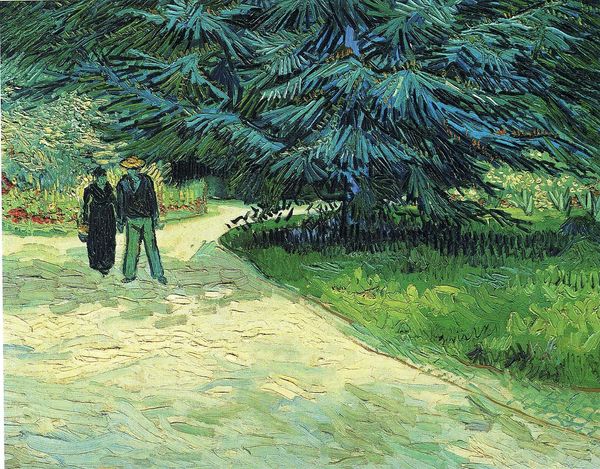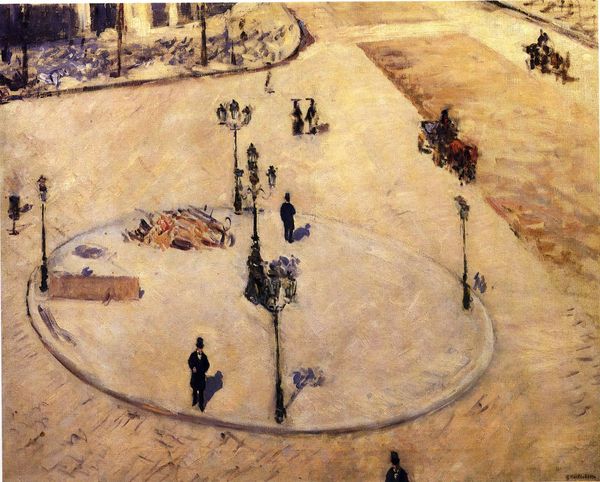
painting, plein-air, oil-paint
#
painting
#
impressionism
#
impressionist painting style
#
plein-air
#
oil-paint
#
landscape
#
urban cityscape
#
oil painting
#
cityscape
#
post-impressionism
#
realism
Dimensions: 73 x 92 cm
Copyright: Public domain
Curator: Looking at "The Trinquetaille Bridge," painted by Vincent van Gogh in 1888, what strikes you first? It's currently held in a private collection, making opportunities like this all the more special. Editor: Immediately, it’s the light. That shimmering, almost iridescent, quality of the strokes suggests not just observation, but a felt sense of the sun reflecting off… everything. What sort of paints were typically available to him at that moment? Curator: Van Gogh would likely have been using commercially produced oil paints, which became increasingly accessible during the 19th century, thanks to industrial advancements. Think about the impact of premixed paints in tubes, it allowed for plein-air painting on an unprecedented scale. This allowed a greater possibility for artists to capture a specific impression in a fleeting instant of reality. Editor: Absolutely, but these tubes also bring questions. Were the hues he saw genuinely like that? How much does chemical formulation influence artistic visions? In this composition, are the working classes able to use the stairs as easily? Curator: That's a poignant reading. It's interesting you pick up on a possible social divide here, because, for me, what always moves me is the humanity threaded through even the rigid architecture—how he uses those swirling brushstrokes, as if to animate even concrete and steel with a sense of human activity and potential. It feels so typically Van Gogh: even in an industrial scene, there's a vibrant soul present. Editor: I agree that humanity seeps in, but it is hard to forget the materiality. Paint isn’t simply "there." Labor went into it, distribution networks supported it, artistic economies dictated his access and use. Maybe these urban stairs became another method by which the worker can only aspire. Curator: A haunting consideration. Ultimately, isn’t that the brilliance of art? The way that such a simple urban transit scene can evoke complex reflections, from the sheer sensual pleasure of colour and light to deep social interrogations, or even…our existential anxieties around our class? It’s the kind of thing that lingers in the heart. Editor: Yes, it really provides an opportunity to question what labor goes into every brushstroke and invites further contemplation regarding Van Gogh's own context.
Comments
No comments
Be the first to comment and join the conversation on the ultimate creative platform.
